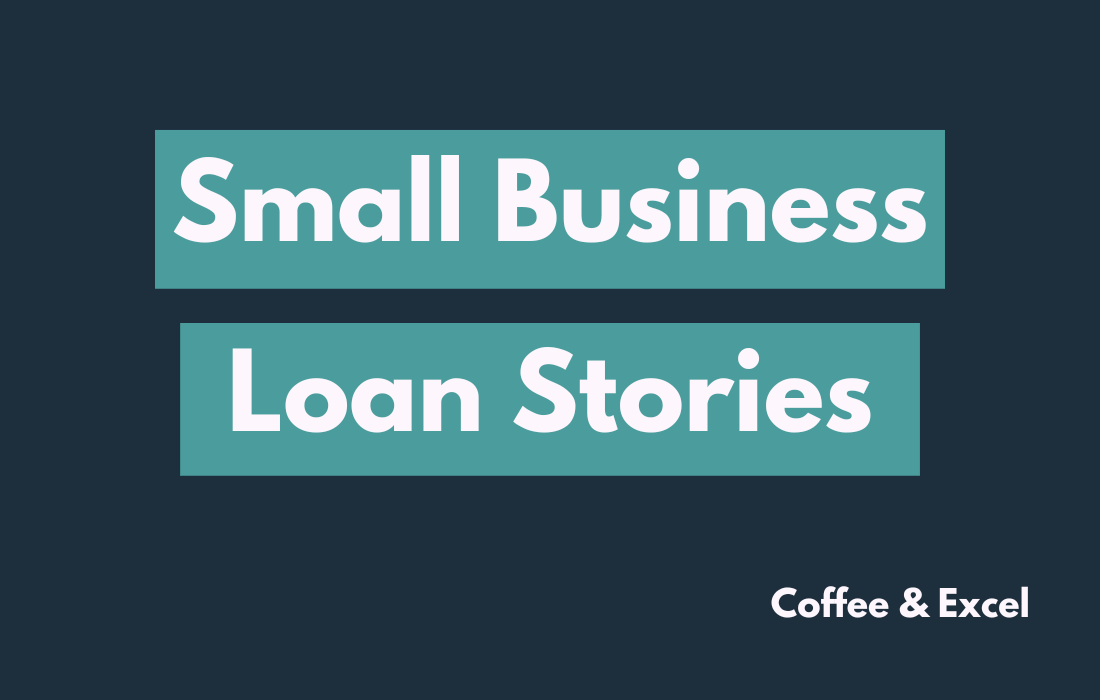Unveiling the Secrets: Small Business Loan Stories That Inspire Growth

Understanding Small Business Loans
Gaining a firm grasp on the intricacies of small business loans can be a game-changer for entrepreneurs looking to propel their business forward. This section will explore the fundamental qualifiers for loan approval, the preparation necessary for the application process, and the pivotal role of cash flow in securing financing through these Small Business Loan Stories.
Key Loan Qualifiers
When it comes to obtaining a loan for a small business, the borrower’s credit history stands out as a critical factor. This includes aspects such as the credit score, payment history, and current debt levels. Both the business’s credit standing and the borrower’s personal credit history can influence a lender’s decision. It’s crucial to review and rectify any errors in your credit report prior to applying for a loan to ensure accuracy (Source).
Preparing for the Application
Securing loan approval demands meticulous organization and thorough preparation. Lenders may request a multitude of documents, including bank statements, tax returns, business licenses, and a comprehensive business plan. Compiling these documents and presenting a well-prepared application package can significantly impact the likelihood of loan approval. For further insights into the loan application process, refer to our loan application process guide.
Cash Flow Considerations
A business’s cash flow is a vital component in assessing its eligibility for a loan. Demonstrating that the business has sufficient cash flow to manage existing debts and take on new loan responsibilities can improve the chances of approval. Strategies to enhance loan eligibility include increasing net income, reducing expenses, or presenting reasonable and accurate cash flow forecasts. For tools to help with financial projections, you might find our loan calculators useful.
Furthermore, navigating the complexities of the loan application process can be daunting for many small business owners, often resulting in loan denials. Partnering with a seasoned attorney who comprehends the ins and outs of the lending process can provide invaluable assistance. These professionals can offer guidance, aid in reviewing the application, and suggest alternate funding options if necessary.
Understanding these foundational elements is just the beginning. As you delve deeper into the world of small business loans, you’ll encounter various lending landscapes such as SBA loans, alternative lending options, and more. By being well-informed and prepared, you can navigate the loan process with greater confidence and success.
Success Small Business Loan Stories
Many small businesses have transformed their operations and reached new heights of success thanks to strategic financing. The following sections highlight some inspiring ‘small business loan stories’ that showcase how organizations have utilized loans for expansion and development.
Expansion and Growth
One of the most common reasons small businesses seek out loans is to finance expansion efforts. A well-timed loan can provide the necessary capital to scale operations, open new locations, and increase market reach.
Sweetgreen
For instance, Sweetgreen, a fast-casual restaurant chain recognized for its healthy salads, used a small business loan to expand its operations and establish new venues. This strategic move allowed them to grow their brand presence and cater to a broader customer base.
| Company | Purpose of Loan | Outcome |
|---|---|---|
| Sweetgreen | Expansion of Operations | Opened new locations |
| Warby Parker | Expansion | Opened additional stores |
| Dollar Shave Club | Scaling Operations | Accelerated growth |
Warby Parker
Similarly, Warby Parker, an innovative eyewear retailer, harnessed a business loan to fund its expansion, enabling them to open additional stores and reach more customers who prefer an in-person experience when selecting eyewear (SMB Compass).
Dollar Shave Club
Dollar Shave Club, a company that disrupted the grooming products market with its subscription model, utilized a business loan to scale its operations and quicken its growth trajectory. This injection of capital helped them to enhance their marketing efforts and distribution channels, contributing to their eventual acquisition (SMB Compass).
Innovation and Development
Innovation is another core area where businesses often invest their borrowed funds. With the right financial support, companies can develop new products, enhance services, and implement cutting-edge technology to stay ahead of the competition.
AppDynamics
AppDynamics, a software company, secured a business loan to bolster its growth and development initiatives. This funding enabled them to invest in product innovation and customer acquisition strategies, which played a vital role in their subsequent success (SMB Compass).
| Company | Purpose of Loan | Outcome |
|---|---|---|
| AppDynamics | Support Growth and Development | Product Innovation |
| Airbnb | Enhance Services and Expand Markets | New Features Development |
Airbnb
Moreover, the vacation rental giant Airbnb leaned on a business loan to enhance its services and introduce new features, as well as to expand into new markets. This strategic move not only solidified their position in the market but also diversified their offerings, making them a formidable player in the travel industry.
These success stories underscore the transformative power of small business loans. By carefully planning the use of borrowed capital, businesses can achieve impressive growth and bring innovative products and services to the market. For more insights on securing financing for your business venture, explore our comprehensive business loans overview and the detailed sba loans guide. If you’re embarking on the loan application process, be sure to use loan calculators to better understand your repayment scenarios and interest obligations.
The Landscape of Small Business Lending
Small business lending plays a pivotal role in the economy, helping entrepreneurs bring their visions to life, maintain operations, and expand their businesses. Understanding the lending landscape is crucial for small business owners who are considering the available options to finance their ventures.
Traditional Bank Loans
Traditional bank loans have long been the cornerstone of small business financing. These loans are generally characterized by lower interest rates and longer repayment terms, making them an attractive option for business owners with strong credit histories. Banks may offer various types of loans, including term loans, lines of credit, and commercial real estate loans, each catering to different business needs.
However, obtaining a traditional bank loan can be a challenging process that involves stringent credit requirements, detailed loan agreements, and collateral in many cases. In light of the Dodd-Frank Act, banks have adopted tighter lending standards, which can make it more difficult for small businesses to qualify for traditional financing (source).
Alternative Lending Options
In response to the challenges of securing traditional bank loans, alternative lending options have gained popularity among small business owners. Online lenders, peer-to-peer business lending platforms, and merchant cash advances offer more flexible and quicker access to capital. These options often require less stringent credit checks and provide faster approval times.
While alternative lenders provide an invaluable service to those who might not qualify for bank loans, it’s important to note that these options may come with higher loan interest rates and shorter repayment terms. As such, small business owners should carefully evaluate the terms and conditions to ensure they align with their financial strategy.
Government-Backed Loans
For small businesses struggling to secure financing through traditional or alternative means, government-backed loans present a viable solution. The Small Business Administration (SBA) offers several loan programs, including SBA loans and small business microloans, designed to support small business owners in various stages of their business lifecycle.
These loans are typically easier to qualify for than traditional bank loans as they are partially guaranteed by the government. This reduces the risk for lenders and can lead to more favorable terms for borrowers. However, the application process for government-backed loans can be complex and time-consuming, and it often requires a thorough loan application process.
The landscape of small business lending is diverse, with each financing option offering unique advantages and considerations. Entrepreneurs should weigh these options against their business objectives, financial health, and growth plans to determine the best path forward. Whether it’s through traditional banks, alternative lenders, or government-backed loans, a well-informed approach to financing can pave the way for a business’s success and contribute to inspiring small business loan stories.
Challenges in Securing Financing
Navigating the financial landscape can be daunting for small enterprises. Securing financing presents numerous hurdles, from stringent credit requirements to the impact of external economic factors. Understanding these challenges is key for small businesses aiming to obtain the necessary funds for operation and growth.
Credit and Approval Rates
Credit scores and history play a pivotal role in loan approval rates. Lenders often assess these factors to determine the risk associated with lending to a business. Small businesses, particularly those in their infancy, may lack substantial credit history, complicating the approval process. Moreover, during economic downturns or crises, financial institutions may tighten their lending criteria, further limiting access to capital for small businesses.
In the context of the recent pandemic, a substantial number of small business owners reported facing financial hurdles, with a reliance on personal savings or credit cards to sustain their businesses. Such practices can adversely affect personal credit scores, thereby influencing business credit and loan approval odds.
Impacts of Regulation
Regulatory frameworks also influence the ability of small businesses to secure loans. Changes in legislation can alter the lending landscape, sometimes creating additional barriers to funding. For example, after the 2008 financial crisis, regulations became stricter, causing banks to become more cautious about lending, which in turn affected the ability of small businesses to grow and create jobs.
Small business owners must stay informed about regulatory shifts and understand how they impact loan availability. Knowledge of loan agreements and the fine print can help businesses navigate these regulatory waters and better prepare for the loan application process.
The Pandemic’s Influence
The COVID-19 pandemic has significantly disrupted the small business financing environment. Many businesses have encountered unprecedented challenges, including a sharp decline in revenue and disrupted supply chains. The pandemic led to a credit crunch as small businesses struggled to meet high credit requirements amid stringent lending criteria. An alarming number of small businesses, around 200,000 in the United States, were forced to close permanently by September 2020, highlighting the severity of these financial challenges.
Moreover, the pandemic has underscored existing inequalities in the lending market. Minority-owned businesses, in particular, have faced additional hurdles, including discrimination and bias in the loan application process. This has exacerbated the financial difficulties for these businesses and highlighted the need for more equitable lending practices.
To overcome these challenges, small business owners may explore various financing options such as government-backed loans, small business microloans, and alternative lending options. Additionally, resources like loan calculators can assist in assessing the financial implications of different loan products.
Understanding these challenges can empower small business owners to seek the right financing solutions and strategize effectively, increasing their chances of securing the funds needed to navigate through difficult times and achieve growth.
Strategies to Increase Approval Odds
Navigating the intricacies of obtaining a small business loan can be a complex endeavor. However, there are several strategies that can enhance the likelihood of loan approval. The following sections delve into the importance of credit health, the benefits of professional assistance, and the significance of accurate financial projections.
Importance of Credit Health
A borrower’s credit history is a cornerstone of loan qualification, impacting the evaluation process for both business and personal credit histories. To bolster the odds of approval, it’s essential to scrutinize and rectify any discrepancies in your credit report beforehand.
| Credit Factor | Impact on Loan Approval |
|---|---|
| Credit Score | Higher scores increase approval odds |
| Payment History | Consistent, timely payments are favorable |
| Current Balances | Lower balances relative to credit limits are beneficial |
Maintaining a robust credit score, a history of prompt payments, and manageable current balances can significantly influence a lender’s decision (Source). For a deeper understanding of how credit affects loan options, explore our business loans overview.
The Role of Professional Assistance
Many small business proprietors find the loan application process daunting due to its complexity. Collaborating with an experienced attorney or financial advisor, who is well-acquainted with the application and approval procedures, can prove invaluable. These professionals can not only assist in reviewing your application but can also recommend alternative funding solutions, such as peer-to-peer business lending or small business microloans, if traditional avenues prove challenging (Source).
Accurate Financial Projections
Lenders scrutinize a business’s cash flow closely to ensure that existing and potential new debts can be serviced adequately. Demonstrating sufficient cash flow is critical; this can be achieved by increasing net income, reducing expenses, or presenting well-founded cash flow projections. Accurate financial projections reflect a thorough understanding of the business’s financial health and future, bolstering the lender’s confidence in the borrower’s repayment ability.
To aid in the preparation of such projections, consider utilizing loan calculators to estimate monthly payments and assess how they fit within your business’s budget. Additionally, ensure that your business plan and financial statements are well-prepared and organized, as they form an integral part of the loan application process.
By focusing on these strategies—maintaining credit health, seeking professional guidance, and providing accurate financial projections—small business owners can significantly enhance their prospects of securing a loan. This proactive approach is crucial, especially in light of the financial challenges many businesses have encountered during the pandemic, as noted by AP News, with the goal of propelling their business toward future growth and success.
The Future of Small Business Financing
With the ever-changing economic landscape, small business financing is also evolving. New trends and resources are emerging that offer entrepreneurs more diverse options for securing the funds they need to start or grow their businesses.
Emerging Trends
The realm of small business lending has seen a significant shift with the advent of alternative lending options. Online lenders and peer-to-peer lending platforms have become increasingly popular as they provide swift and adaptable financing solutions. While these platforms may have higher interest rates, their convenience and flexibility often outweigh the costs for many business owners (source).
Another trend that has been gaining traction is the rise of government-backed loans, particularly those offered by the Small Business Administration (SBA). These loans, which include programs like SBA loans guide, are especially appealing to entrepreneurs who may not qualify for traditional bank loans. The SBA’s backing can make these loans more accessible and provide more favorable terms.
With technology at the forefront, fintech companies are also transforming the way small business loans are processed. Innovations in data analysis and artificial intelligence are enabling lenders to make more informed decisions and offer personalized loan products. These advancements could potentially lead to more competitive loan interest rates and terms for small businesses.
| Trend | Description |
|---|---|
| Alternative Lending | Online platforms offering flexible and fast loans |
| Government-Backed Loans | SBA programs providing accessible financing |
| Fintech Innovations | Data-driven approaches to loan processing |
Assistance Beyond Loans
In addition to loans, small businesses can explore various forms of financial assistance to help them succeed. Trade credit is one option that allows businesses to purchase goods or services and pay for them at a later date. This can help manage cash flow and maintain operations without immediate outlay.
Grants are another form of assistance that can provide small businesses with much-needed funds without the obligation to repay. These are often industry-specific or intended for businesses that meet certain criteria, such as those owned by minorities or veterans.
For businesses in need of temporary funds to cover short-term gaps, bridge loans can be a viable solution. These loans are designed to provide immediate cash flow until a more permanent form of financing can be secured.
Business owners should also consider options like merchant cash advances, small business microloans, and business lines of credit. These alternatives can offer more tailored financing solutions based on the unique needs of a small business.
Partnerships and collaborations with other businesses can also provide mutual benefits and shared resources without the need for direct financial loans. This cooperative approach can lead to shared growth and success.
As the future unfolds, small business owners must stay informed and agile, ready to adapt to new financing methods and assistance programs that could shape the trajectory of their entrepreneurial endeavors. Whether it’s through new business loans, innovative lending practices, or non-loan assistance, the goal remains the same: to fuel the growth and sustainability of small businesses.





